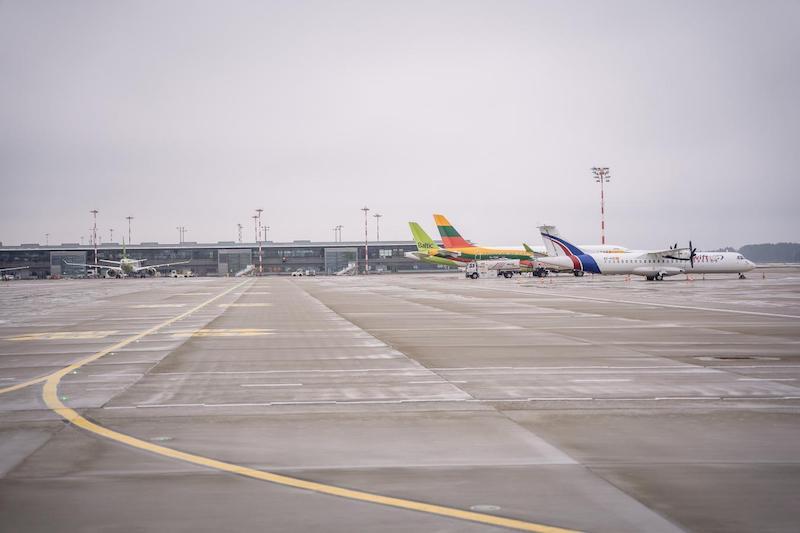
Riga Airport's (RIX) board of directors has approved a “net zero roadmap” which outlines how the airport will eliminate or sequester all carbon dioxide emissions by 2050.
Latvia’s largest airport says it will reach the target via a mix of initiatives aimed at cutting emissions within the airport’s control and working with stakeholders—such as airlines—to reduce emissions not entirely within RIX’s control. A big part of the plan is switching to alternative energy sources, including developing a solar park.
“Achieving zero CO2 emissions at airports involves two main elements: firstly, reducing the airport's own emissions from electricity, heat and fuel consumption to as close to zero as possible and, secondly, neutralizing emissions that cannot be reduced through CO2 sequestration,” the airport says in a statement. “Electricity, fuel and heat consumption, as well as surface de-icing, are the main sources of emissions at the airport that the company can directly influence.”
In addition to the solar park, the airport says it plans to modernize its electric grid as well as replace "apron and runway lighting with efficient LED lighting and [improve] the energy efficiency of existing buildings.”
RIX notes “a significant part of CO2 emissions is not under the direct control of the airport, but is associated with companies and organizations operating at the airport. It consists of aircraft fuel consumption, energy and fuel consumption by ground handlers and airport tenants, aircraft de-icing, wastewater treatment and carriage of passengers and airport staff to and from the airport.”
The airport says it is cooperating with stakeholders to construct a high-speed Rail Baltica station at RIX which is already underway, and developing a mass of charging stations for electric vehicles.
RIX says it handled two-thirds of 2019 January passenger levels in January 2023. In terms of O&D passengers, totals were down 13% versus January 2019, with about 20% of the airport’s passengers connecting. “Airlines [are] using larger capacity aircraft for the flights from and to Riga,” the airport reports.
“Seat occupancy rates on flights to and from Riga are high, around 70% on average, but on certain flights to [warm-weather] destinations these rates approach 100%,” Laila Odiņa, Riga Airport's board chair, says. “Forecasts of the carriers [operating at RIX] in relation to the upcoming months are stable and allow us to look at further recovery.”
According to the airport, Latvia’s airBaltic had a leading 51% market share at RIX in January. The second carrier at the airport in terms of January market share was ULCC Ryanair at 32%. Ryanair “is able to offer an attractive range of destinations at prices available to a broad range of travelers,” the airport says.




